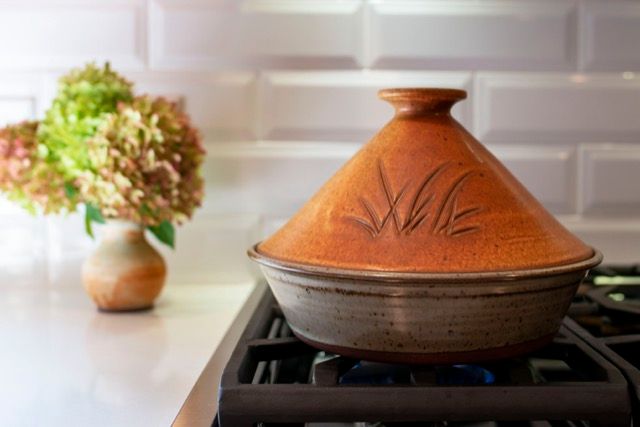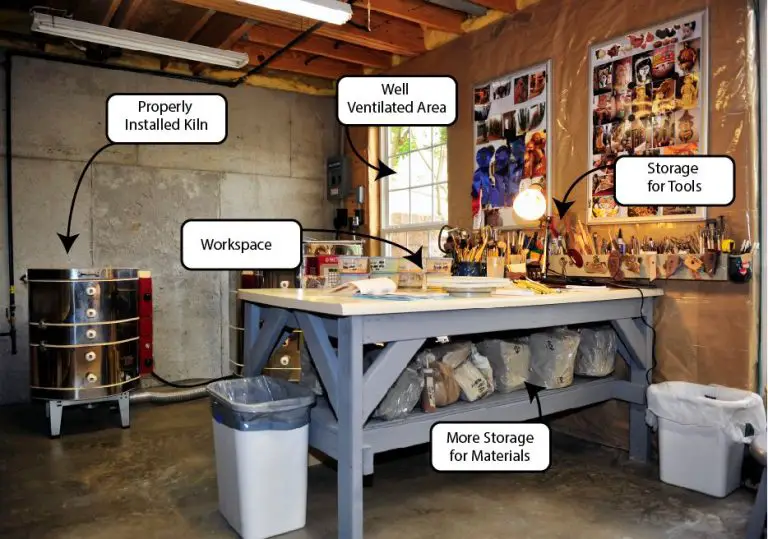Are Clay Cooking Pots Any Good?
Clay pot cooking utilizes pots made from unglazed or glazed clay or pottery to cook food. These pots have been used for thousands of years in a variety of cultures and cuisines around the world and are particularly prevalent in Asian cooking traditions. Clay pots allow for gentle, even cooking, retain moisture and condensation, and impart rich, earthy flavors into food. Clay pot cooking is an effective and flavorful cooking technique that experienced a resurgence in popularity in modern times for its versatility, sustainability, and nostalgic evocation of rustic, traditional cooking methods.
According to Wikipedia, “Clay pot cooking is a process of cooking food in a pot made of unglazed or glazed pottery. Cooking of svadbarski kupus (wedding cabbage) in ceramic pots, is part of culinary tradition of Balkan countries” (https://en.wikipedia.org/wiki/Clay_pot_cooking). Many cultures around the world have long histories of cooking with clay pots, as the porous material allows steam to escape during cooking while retaining just enough moisture to infuse foods with a depth of flavor. Modern cooks are rediscovering the benefits of clay pot cooking and integrating this time-honored technique into contemporary cooking.
History of Clay Pot Cooking
Clay pot cooking dates back thousands of years to some of the earliest civilizations. The earliest known clay pots were crafted by the Sumerians in ancient Mesopotamia around 6000 BC. The Sumerians utilized clay pots for cooking, storage, and transport of foods and liquids (Clay Pot Cooking: A Historic Evolution). Clay pottery then spread to ancient Egypt around 4000 BC, where it was used for cooking bread and meats.
The technology flourished and clay cooking pots became a staple around the world. They were used across ancient civilizations including the Greeks, Romans, Chinese, and Mayans for steaming, boiling, braising, and baking foods. Each culture developed their own styles and shapes of clay pots suited to their cuisine and cooking methods. Clay pots allowed food to be cooked slowly over fire or coals.
The oldest known clay cooking pots found were dated to around 5500 BC in China. In Japan, clay pot cooking known as robatayaki dates back to the Kofun period around the 3rd century AD (Clay pot cooking). In India, cooking in clay pots called handis has been traced to the Indus Valley civilization circa 3300-1300 BC.
Clay pots were an essential technology that allowed food to be cooked and preserved safely. The porosity of clay allowed cooking with steam and using water to regulate temperature. Their durability and ease of cleaning also made them ideal cookware across many cultures through the ages.
Benefits of Cooking with Clay
Clay pots provide some unique benefits for cooking. As the MITTICool article explains, clay is an excellent conductor and retainer of heat[1]. This allows clay pots to distribute heat gently and evenly throughout the pot. Food cooks slowly at lower temperatures, bringing out more flavors and nutrients. The clay also retains moisture well. As the Food and Wine article discusses, steam circulates freely in clay pots, keeping food tender and moist[2]. This makes clay pots ideal for cooking rice, beans, stews, soups and braised dishes.

Compared to metal pots, food cooked in clay pots tends to be more evenly cooked, nutritious and flavorful. The porous nature allows heat and steam to circulate through the walls and lid. This even heating and moisture retention are two of the main benefits that make clay pots so useful and versatile in the kitchen.
Types of Clay Pots
There are two main categories of clay pots used for cooking – unglazed and glazed.
Unglazed pots are made from natural clay and bisque fired. They have an earthy, porous surface that allows steam to escape during cooking. This gives food a unique flavor. Some examples of unglazed clay pots are Japanese donabe pots, Indian chati pots, and bean pots used for baking beans. According to this source, unglazed clay is the preferred material for making donabe pots in Japan: https://www.foodandwine.com/cooking-techniques/guide-to-clay-pot-cooking-recipes
Glazed pots have a glass-like coating applied to the clay before firing, making them non-porous. This allows them to hold in moisture better during braising and stewing. Examples include French cassole pots and Spanish cazuela pots. The glaze also makes them easier to clean. Glazed clay pots often come in vivid colors and decorative patterns.
Both unglazed and glazed pots can vary greatly in quality depending on the clay used and production methods. Higher quality pots made from refined clay in places like France, Spain, Italy, and Japan tend to be more durable and hold heat better. The provenance of the clay is an important factor.
Clay Pot Cooking Techniques
There are some key techniques to follow when cooking with clay pots to ensure proper use and care:
Soaking – Clay pots should always be soaked in cool water for 10-15 minutes before first use and before cooking to prevent cracking. The water causes the clay to expand gently instead of expanding too quickly from the heat of cooking. After soaking, lightly coat the inside of the pot with oil.
Seasoning – For first-time use, “season” the pot by coating the inside with oil and letting it sit for several hours or overnight. Then wash and proceed with soaking and cooking. Seasoning helps seal the porous clay.[1]
Heating – Avoid placing a cold clay pot directly into a hot oven or over a burner on high heat, which can cause cracking. Heat the pot gradually and use medium heat when cooking. Allow the pot to fully cool before washing.[2]
Handling – Use wooden, silicone or plastic utensils to avoid scratching. Store clay pots fully dry. For glazed pots, avoid rough scouring that can damage the glaze.
Cleaning – Handwash only using mild soap and a soft sponge or cloth. Harsh detergents can strip seasoning. Oil lightly after drying.
With proper care and technique, clay pots can last for many years of cooking.
[1] https://www.thecitycook.com/articles/2012-10-03-the-essential-kitchen-clay-pot-cooking
[2] https://www.foodandwine.com/lifestyle/kitchen/clay-pot-cook-season-clean-basics
Clay Pot Cooking Safety
When cooking with clay pots, it’s important to consider safety, especially when it comes to lead. According to https://ireadlabelsforyou.com/clay-cookware-safe-or-toxic/, some clay pots contain lead in the glaze or clay itself. Even small amounts of lead can leach into food during cooking and cause health issues. The best way to ensure your clay cookware is lead-free is to look for pots that comply with California Proposition 65 standards, as noted by https://www.foodandwine.com/lifestyle/kitchen/clay-pot-cook-season-clean-basics.
It’s also important never to leave a clay pot empty over a heat source. The clay can crack or explode from the rapid temperature change. Only cook food in a clay pot with adequate liquid to prevent this safety issue.
Best Foods for Clay Pot Cooking
Clay pots are especially well-suited for cooking foods that benefit from gentle, even heating and time to develop complex flavors. Some of the best foods to cook in clay pots include:
Stews
Clay pots are perfect for braised dishes and stews like beef bourguignon, coq au vin, and osso buco. The clay evenly distributes heat, resulting in tender, fall-off-the-bone meat and vegetables. The pot keeps moisture in, allowing you to achieve a rich, concentrated sauce or gravy.1
Rice
Cooking rice in a clay pot results in light, fluffy grains with a slightly nutty flavor. The clay absorbs excess moisture, preventing the rice from getting soggy or mushy. Many cultures have traditional clay pot rice dishes like Spanish paella, Chinese clay pot rice, and Indian dum biryani.2
Beans
The gentle heat of a clay pot is ideal for cooking beans and legumes that would otherwise turn to mush on direct high heat. The clay pot keeps the beans intact while allowing them to become perfectly tender. Dishes like cassoulet, red beans and rice, and Tuscan bean soup taste rich and complex when cooked in clay.1
Clay Pot Meal Recipes
Clay pots are great for slow cooking stews, rice dishes, and bean soups that absorb flavors beautifully over low gentle heat. Here are some classic clay pot meal recipes to try:
Chicken Stew
This simple chicken tagine is a Moroccan clay pot favorite. Chicken is cooked with onions, garlic, spices, olives, and preserved lemon for deep, complex flavors. The chicken stays tender thanks to the gentle simmering heat of the clay pot.
Rice Pilaf
Rice pilafs are enhanced when cooked in clay pots, like this clay pot rice from China. The clay allows the rice to cook evenly while infusing it with flavors. Try chicken, veggies, or just seasonings cooked into the rice.
Bean Soup
Hearty bean soups are well suited for clay pots. The beans soften slowly while absorbing smoky flavored broth. Add veggies, meat, or keep it simple with beans and seasonings. Just be sure to soak beans first before cooking.
Pros and Cons of Clay Pots
Clay pots have both advantages and disadvantages compared to other materials like plastic or metal. Some of the key pros and cons include:
Pros:
- Clay is a natural, porous material that allows air and moisture to reach plant roots.
- Terracotta clay pots promote healthy root growth and help prevent overwatering.
- Clay is environmentally friendly and biodegradable.
- Clay pots come in attractive traditional shapes and styles.
- Clay provides insulation to maintain soil temperatures.
Cons:
- Clay is heavy and more fragile than plastic pots.
- Clay pots require periodic sealing or “seasoning” to prevent moisture loss.
- Water evaporates faster through unglazed terra cotta, requiring more frequent watering.
- Clay pots are more expensive than comparable plastic pots.
- Clay can crack or chip over time, eventually requiring replacement.
Overall, clay pots have desirable natural properties for plant growth, but require extra care and maintenance compared to artificial materials. The porous nature makes clay ideal for some plants and gardening conditions, but heavy and prone to breaking. Each gardener must weigh the pros and cons of clay pots to decide if they are a good choice for their needs.
Conclusion
In summary, clay pots offer a number of advantages for cooking, especially when it comes to dishes that require slow braising, stewing, or simmering. The porous material allows heat to distribute gradually and evenly, preventing burning or scorching. This makes clay pots ideal for cooking rice, beans, stews, soups, and more. The clay absorbs excess moisture, resulting in more concentrated flavors and tender textures. While clay pots do require more care compared to metal or non-stick pans, many cooks find them worth the effort for the superior cooking results. With the right clay pot suited to your cooking style and some practice with clay pot techniques, you can achieve delicious homemade meals full of depth and character.



